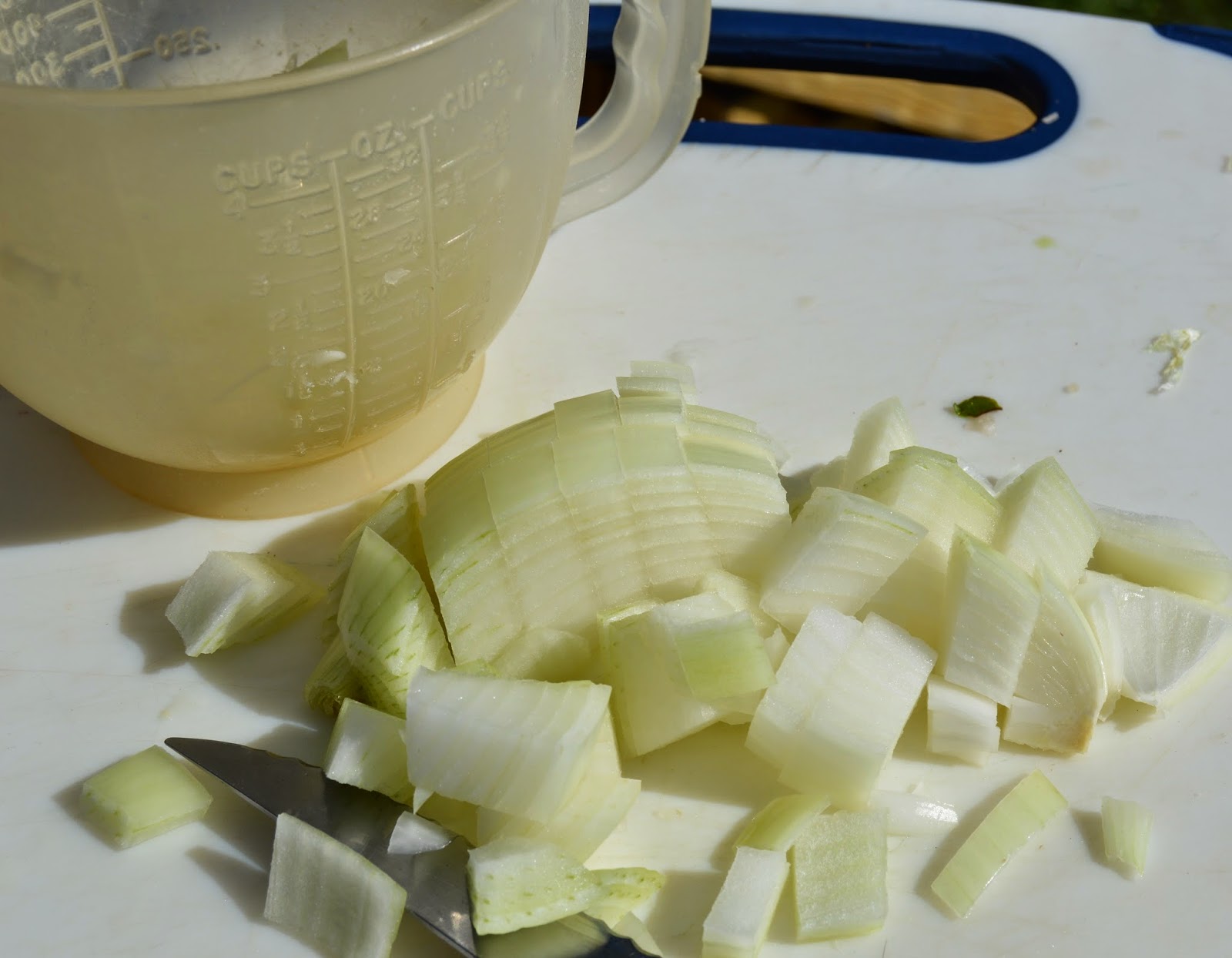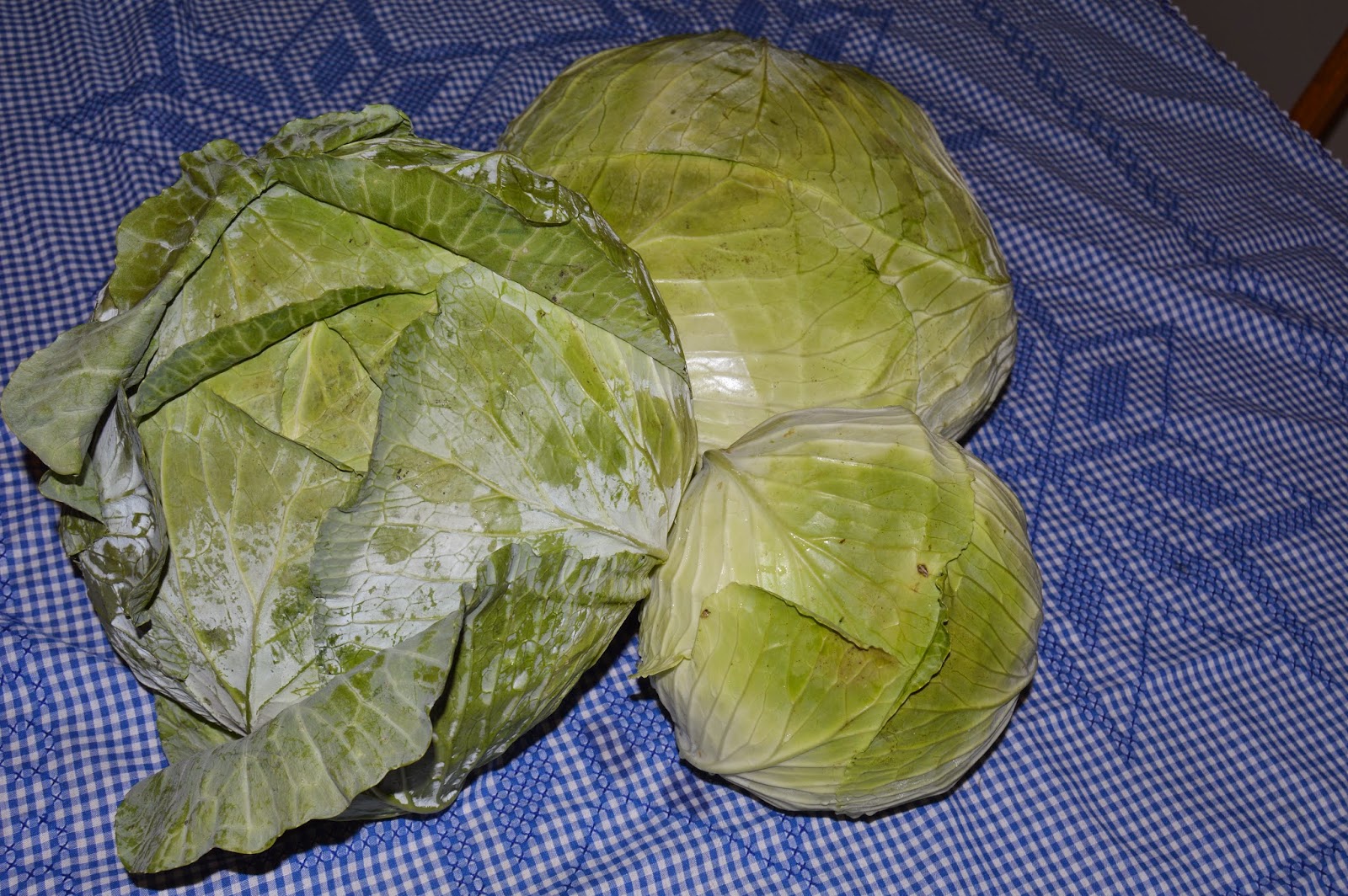One more post on Sourdough seemed appropriate. No information on food production is complete until you have some recipes to go with it. So here are a few of my favorites.
Basic Sourdough Dough Recipe
(This recipe comes from my dear friend Kisi)
Makes 2 Loaves of bread
3/4 cups sourdough starter (It should be fresh, bubbly and alive.)
2 3/4 cups Water
1TBS Sea Salt
6 - 8 cups
Whole Grain Flour – freshly ground (approx 6 cups coarse ground flour or 8 cups finely ground flour – it should be about 950 grams by weight)
- Add sourdough starter to warm water in a bowl
- Wisk flour and salt, mixing thoroughly
- Knead the dough by hand for 15 minutes, or with mixer for 10 minutes
- Place dough in large bowel
- Cover with plastic wrap and a dishtowel. Let sit at room temperature for 12-18 hours.
- Shape into round loaves or place into loaf pans
- Make a couple of slices into the dough with a serrated knife (optional).
- Cover with moist cloth
- Let rise at room temperature until loaf doubles in size (1 to 2 hours). You can do this in a slightly warmed oven (less than 100 degrees). If cloth sticks to dough, spray cloth with water to release.
- Preheat oven to 425 F. For Artisan crisp crust, place a pan of water in the oven for steam. Bake for approximately 40 minutes. (If bread appears to brown too quickly, I have turned the temperature down to 375 degrees after the first 10 minutes, then complete baking time.)
- You can also check for doneness by inserting a thermometer in the center of the loaf. It should read 198-200 degrees.
- Remove from oven and cool on rack (if you can wait that long!)
Pita Bread
After the dough has risen for 10 to 24 hours, preheat a baking stone in a 550 degree oven. Tear off a piece of dough and roll to about 3/16” thick rounds. Bake in the fully heated oven for about 5 or 6 minutes until the dough puffs up or is golden brown. Remove from oven and allow to cool enough to handle. Do not stack until pitas are completely cooled. Cut in half and fill with veggies, hummus, or butter and honey. Pitas freeze well.
Pizza Crust
Use this same recipe to make your pizza crust but add 2 TBS olive oil or butter and 1 TBS of honey or sweetener. After the dough has risen for 10 to 24 hours, use as you would pizza dough. Add toppings and bake.
Easy Sourdough Biscuits (these are wonderfully light and fluffy)
3/4 cup sourdough starter
3/4 cup buttermilk (or milk with 1 tsp vinegar added)
1/3 cup melted butter or oil (not hot)
2 cups flour (I use half whole wheat or other, half white)
1 tsp of salt
2 tsp of baking powder
1 tsp of baking soda
1 Tbsp sugar
Extra flour, if needed
Mix together starter, oil, and buttermilk. Combine dry ingredients and add all together to sourdough mixture, stirring together until moistened. Turn onto a floured surface and knead gently for a minute or two. If the dough is too soft, add flour 1 Tbsp at a time until desired consistency. Roll out and cut into rounds with wet glass or biscuit cutter. Place on a greased baking sheet and let sit for 30 min. Bake at 400 deg for 15 min or until lightly browned. Makes approximately 12 biscuits, depending on the size you make them.
Note: the preferred method of making these (to get the nutritional benefit of soaking the grains) is to mix together the starter, buttermilk, and butter. Then gradually mix in the 2 cups of flour until it's a thick sticky dough. Leave that mixture to sit on the counter for 6-8+ hours. When ready to bake, preheat the oven, then mix in salt , sugar, and baking soda/powder. If needed, add more flour to get the right consistency. You can also make "drop biscuits" by dropping a dollop of the dough directly on a greased baking sheet and bake as normal.
Sourdough pancakes
1 cup sourdough starter
2+ cups buttermilk, milk, or water
2 1/2 cups flour (whole grain flour is best--try a combination)
1/3 cup melted coconut oil, butter, or a combination
3 Tbsp sugar
2 eggs
1 1/2 tsp baking soda
3/4 tsp salt
Since you usually eat pancakes in the morning, start the night before by combining the sourdough starter, buttermilk or water, and flour. Let this sit on the counter overnight to soak the flour and ferment.
In the morning add the remaining ingredients. If the batter is too thick, add a little extra water or milk; if too thin, add a little extra flour. It will depend largely on the types of flour you use.
Make your pancakes as you would regular pancakes. These are deliciously light and fluffy!
Sourdough Chocolate Cake
1 cup sourdough starter (live and bubbly)
1 cup milk
2 cups All-Purpose Flour or half white, half whole grain flour
1 1/2 cups granulated sugar
1 cup olive oil
2 teaspoons vanilla extract
1 teaspoon salt
1 1/2 teaspoons baking soda
3/4 cup unsweetened baking cocoa (not Dutch process)
2 large eggs
Chocolate Cream Cheese Frosting
8 ounces softened cream cheese
1/4 cup softened butter
4 cups sifted powdered sugar
1/2 cup cocoa powder
4 Tablespoons milk or cream
1 Teaspoon vanilla
With hand mixer, beat cheese, butter, and vanilla until smooth. Slowly add in powdered sugar and cocoa powder, alternating with milk one tablespoon at a time, until frosting reaches a creamy consistency. (You may or may not need all of the milk.)
Frost cooled cake, and enjoy!
There is another type of sourdough considered "instant" or "no fail". This type of sourdough is made using bakers yeast to inoculate the dough--rather than the natural yeast that comes from the air. It does not take as long to create, but may not have all the health benefits as the natural sourdough. However, I thought I'd include these recipes as well as they are easy to make and very tasty.
I wish to thank Christine Wilshaw from our class for the information contained on this page. She kindly lent me the book, “Sourdough Cookery” by Rita Davenport. I will include a couple of recipes from the book here, but there is much more information if you would like to research it out yourself.
INSTANT SOURDOUGH STARTER
2 cups all purpose flour
1 teaspoon salt
3 Tablespoon sugar
1 Tablespoon yeast
2 cups lukewarm water
With a wooden spoon stir dry ingredients together in a large mixing bowl and gradually add lukewarm water. stir until mixture resembles a smooth paste. Cover with a towel or cheesecloth and set in a warm place to sour. Stir mixture several times a day. In 2 or 3 days sourdough will be ready. Store in a heavy plastic container, and a hole punched in lid to allow gases to escape.
To make a batter for a favorite sourdough recipe, take out 1 cup sourdough starter and combine with 1 cup all purpose flour and 1 cup lukewarm water. Mix well with a wooden spoon. Don’t worry about lumps in mixture, fermentation will dissolve them within a few hours. Cover with a towel or plastic wrap and set in a warm location several hours or overnight. Before adding additional ingredients to recipe, return at least 1/2 cup of mixture to sourdough container stored in refrigerator to replenish starter.
If starter is not replenished in this manner at least once a week, add 1/2 cup each of lukewarm water and all purpose flour to container of sourdough. Mix together; leave out of refrigerator overnight, covered with a towel or plastic wrap. Next morning stir down mixture, cover with lid and return to refrigerator until needed.
Occasionally pour all of sourdough starter out into a mixing bowl. Wash container to remove flour buildup. To replenish, add equal portions of flour and water, cover, let stand in a warm location overnight.
OLD FASHIONED SOURDOUGH BISCUITS
1/2 cup sourdough starter
3/4 tsp salt
1 cup milk
1 Tablespoon sugar
2 1/2 cup all purpose flour
1 teaspoon baking powder
1/2 teaspoon baking soda
1 Tablespoon cooking oil
1 Tablespoon butter
2 Tablespoons corn meal
Mix sourdough starter, milk, and 1 cup of flour in a large bowl. Let it stand overnight or all day at room temperature to allow it to rise. When ready to make up the biscuits beat in 1 cup of flour. Combine salt, sugar, baking powder, baking soda with remaining 1/2 cup of flour and sift over top of mixture. Mix together. Turn out onto floured service and knead 10 to 15 times. Roll out to 1/2 inch thickness. Cut out biscuits and dip in mixture of melted butter and oil. Place close together on baking sheet sprinkled with corn meal. Cover with a cloth and allow to rise free from drafts 30 to 40 minutes. Bake at 375 degrees for 30 to 35 minutes. Best when served hot from the oven. (These are really good.)
_________________________________________________________________________________
One last thing to mention, many of these recipes are super delicious made with grains such as kamut, spelt, or einkorn. These are ancient grains that have, in recent years, become available to the general public. They have not undergone the hybrid or other genetic changes that our present day wheat has. Many people who have difficulty digesting wheat find that these grains are often easier on their system--particularly when used in a sourdough starter. One great place to find these grains is with Greg Hall at khorasanmills@gmail.com. I mentioned him in my first Sourdough post, but thought I'd mention him once again. He does frequent group buys, so his prices are the best around. Plus he buys directly from the farmer, so quality control is excellent. Send him an email, and ask to be put on his list for group buys.

































